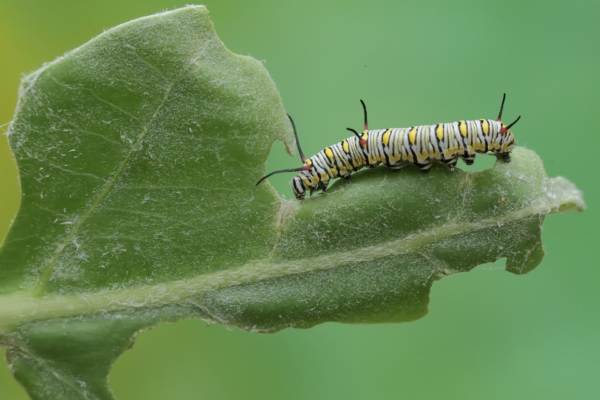Caterpillars are pests that feed on the leaves of flowers and plants. Once they invade a garden, the carefully cultivated plants can quickly die. While using pesticides can eliminate caterpillars, these chemical solutions are harmful to the environment and other wildlife. Fortunately, experts have shared a clever trick to prevent caterpillars from destroying your plants – simply placing sheer fabric like a bridal veil in the garden can be effective.
According to the “Love The Garden” website, caterpillars are the larval stage of butterflies and moths. Since many caterpillars feed on tree leaves, some species can become serious plant pests. For example, the caterpillars of the small cabbage white butterfly are one of the most common caterpillars found in gardens, damaging plants like Brassica, such as cabbage.
Most caterpillars are active in the spring and summer months. The caterpillars of the large cabbage white butterfly can chew holes in kale leaves. Caterpillars of the small cabbage white and cabbage moth often feed on the hearts of cabbage plants. Meanwhile, caterpillars of the box tree moth construct webs in feeding areas and devour all the leaves of boxwood plants.
There are many methods to prevent caterpillar infestations in plants. Nicole Burke, an expert from the American landscape design company Gardenary, shared a unique tip of using sheer fabric like a bridal veil. She claims that after placing sheer fabric in her garden, she no longer had issues with pests.
Burke wrote on the company’s website that when she noticed caterpillars disturbing her garden, she realized they had a liking for leafy green vegetables. This made her understand the importance of protecting lettuces; she needed to keep pests away from them from the beginning.
She mentioned that while you can spray chemicals to repel insects, it might be easier to protect plants from pests right from the planting stage.
So, the next time she prepared to sow lettuce seeds, she purchased a fine mesh fabric to create a veil, covering the plants immediately after sowing. As a result, she encountered no pest issues. This is because the moths that lay eggs cannot reach the lettuce and must seek other places to deposit their eggs.
Burke suggested that you could also use agricultural fine mesh to cover plants, but sheer fabric is a very cost-effective alternative that protects plants from pest attacks while still allowing light, air, and rainwater to enter.
It is important not to let the fine mesh or sheer fabric come in direct contact with the plants, as moths can lay eggs on the leaves through them.
“Love The Garden” also mentioned other methods to prevent insect infestations:
– Regularly inspect plants that are vulnerable to caterpillar attacks and take immediate action upon discovering caterpillars.
– Remove caterpillar eggs and caterpillars from leaves. They typically feed at night, so a flashlight may come in handy.
– Hedgehogs and birds like blue tits, great tits, blackbirds, and robins feed on caterpillars, so you can attract these birds to your garden by providing food and bird nesting options.
If the above methods do not work, the last resort for dealing with severe infestations is spraying pesticides. For optimal results, spray when there are signs of large numbers of caterpillars and reapply when necessary.
Before spraying insecticides on fruit and vegetable plants, always check if the pesticide is safe for edible crops. To protect bees and pollinating insects, do not spray plants during flowering periods and avoid using pesticides in areas where bees are frequent.

